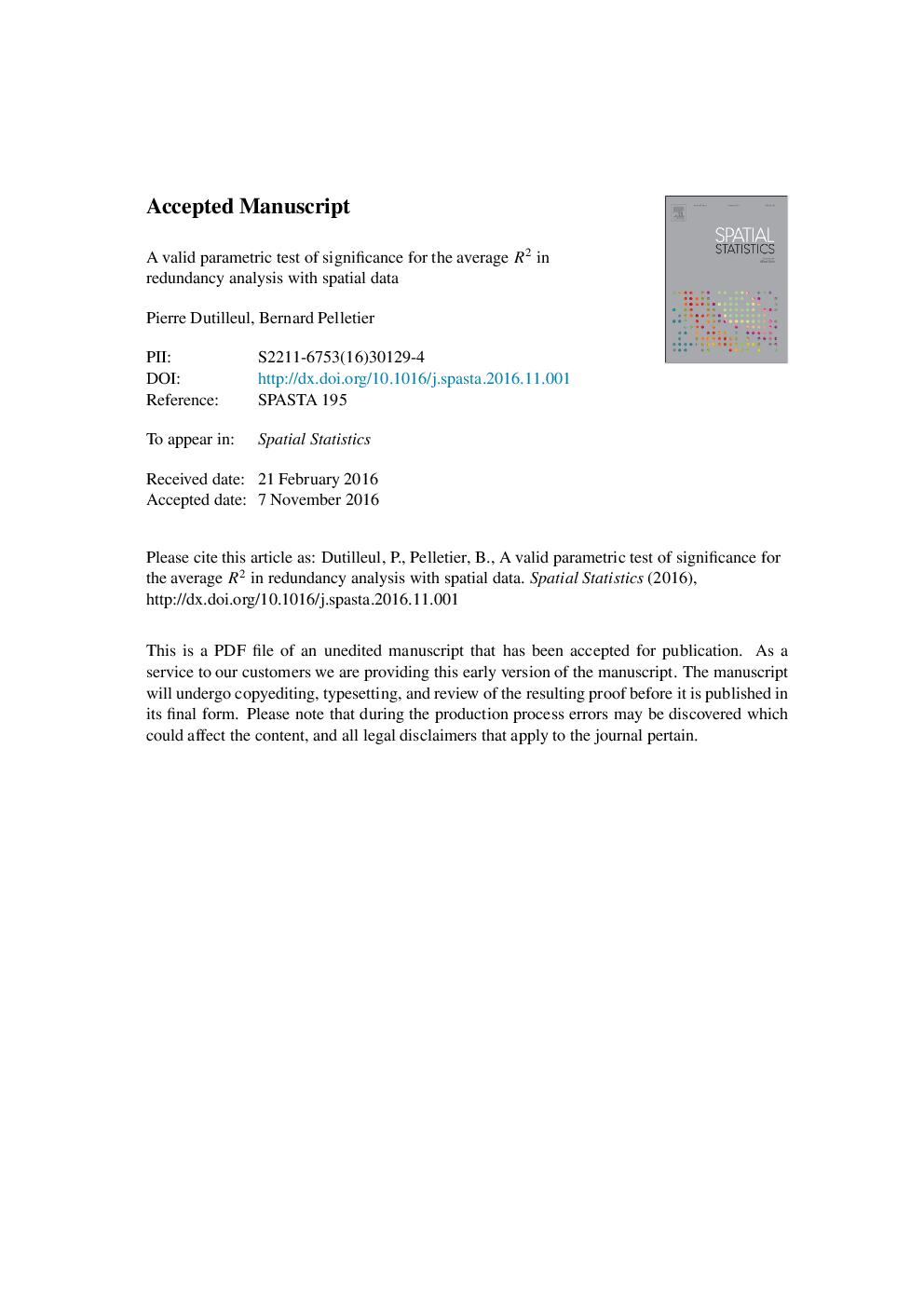| Article ID | Journal | Published Year | Pages | File Type |
|---|---|---|---|---|
| 5119035 | Spatial Statistics | 2017 | 44 Pages |
Abstract
Consider matrices Y and X containing 2-D spatial, continuous-quantitative data collected in the same n locations at a given time, to explain p  Y-variables (e.g. plant diversity indices) by qX-variables (e.g. soil characteristics) in a redundancy analysis (RDA, n>q+1); normality and first-order stationarity are tenable assumptions. The studied problem is how to assess with a valid parametric test of significance the “average R2” of such an RDA. The proposed solution consists in a modification of the F-test of the literature. In both its numerator and denominator, the degrees of freedom of the modified F-test are effective, i.e. they incorporate the heteroscedasticity and spatial auto- and cross-correlations of the Y-variables. Comparison is made with an extension of the modified F-test for multiple correlation analysis with spatial data, where an effective sample size is used for autocorrelation in the denominator. Theoretical and applied aspects of the tests of significance are presented, with recent computational procedures in multivariate geostatistics, extensive simulation results (156 validity-analysis scenarios), and a real-data example. In summary, the new modified F-test is generally valid, power approaches 1.0 for theoretical coefficient values >0.1, and the linear model of coregionalization fits the heteroscedasticity and spatial correlations of the Y-variables adequately.
Keywords
Related Topics
Physical Sciences and Engineering
Earth and Planetary Sciences
Earth and Planetary Sciences (General)
Authors
Pierre Dutilleul, Bernard Pelletier,
